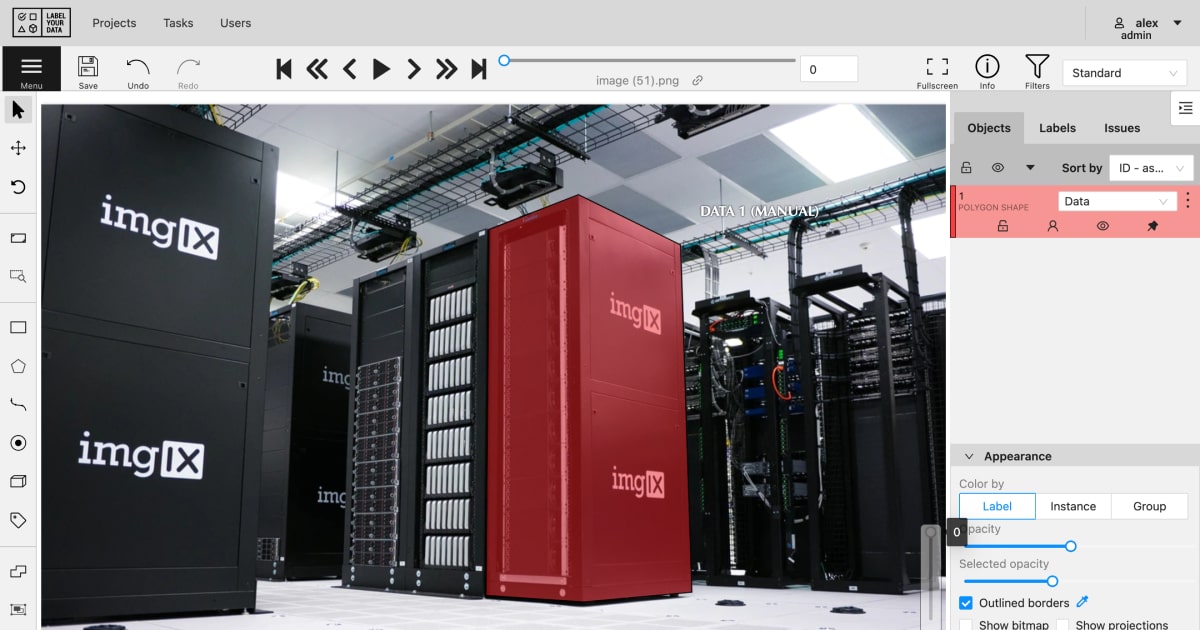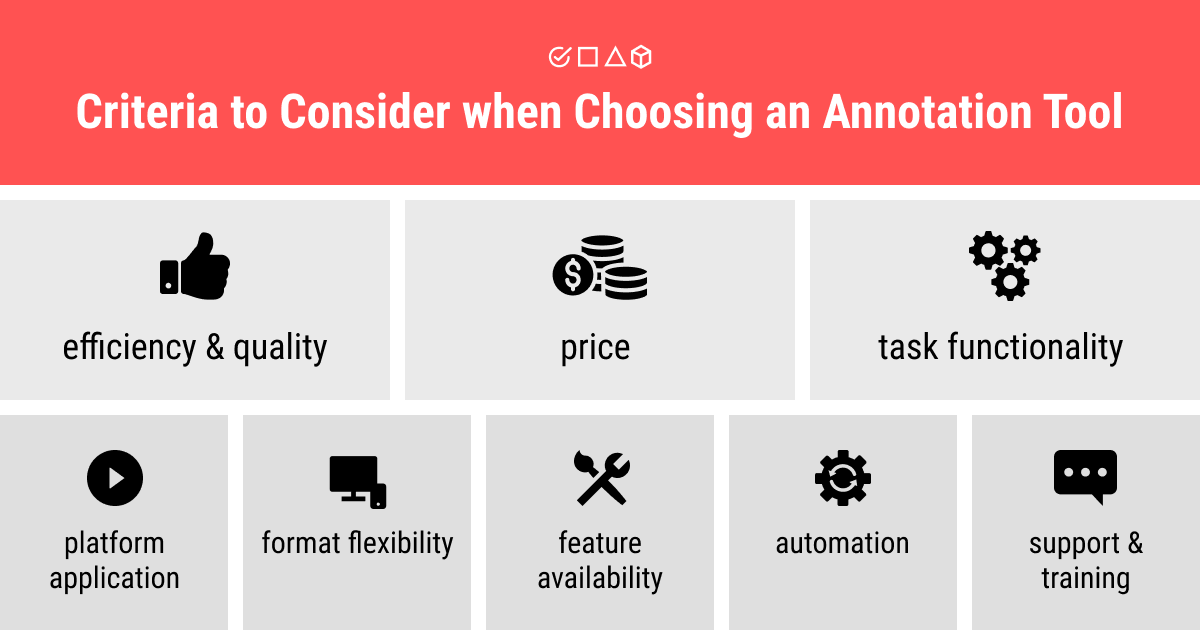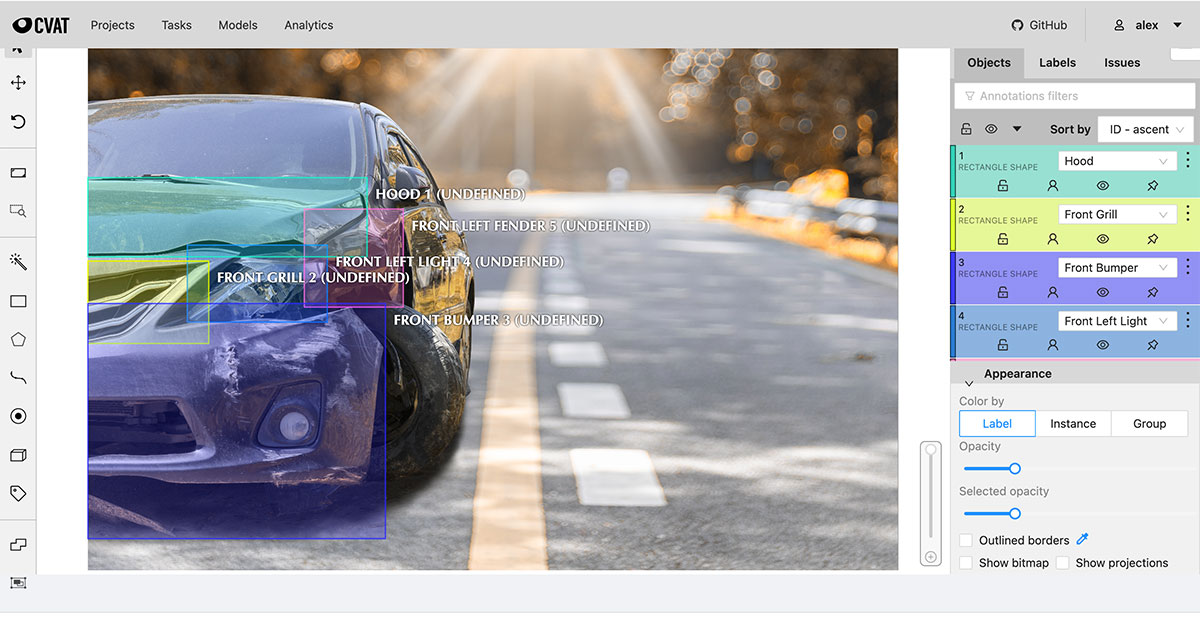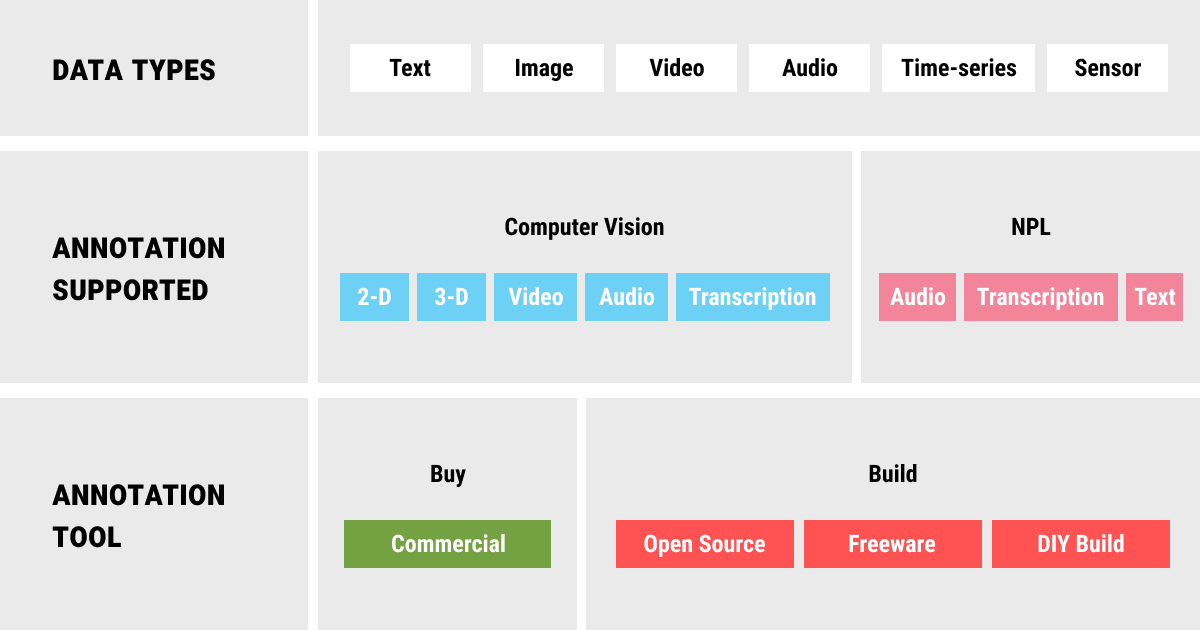- Diamond in the Rough: What Is Big Data and Why Do You Need Data Annotation?
- Dig a Little Deeper: How to Choose the Right Annotation Tool
- Twinkle, Twinkle, Little Star: The Best Annotation Tools for Machine Learning
- Into the Unknown: The Short Summary of Annotation Tools
AI in the modern world has ceased to be a flashy new idea that is available to the chosen ones. Today, it’s a necessity that every business needs to use in order to catch up in the competition race. This is especially true as the world today generates more data than ever.
However, the data around us is raw and unprocessed. It has vast potential but also requires to be properly handled in order to uncover said potential. Annotation is one of the most important steps in the process of making the data usable. Annotation tools thus become a crucial asset for any business that wishes to leverage the power of big data.
In this article, we’ll talk about annotation software, free and otherwise, ready solutions and straight-up outsourcing, presented on the market today. Yet we’ll start with the basics and talk about data annotation first. If you already know everything you need about data annotation, what it is, and how to apply it, you can skip the introduction. Instead, you can read about how to choose the right annotation tool or look through the list of the best annotation tools for ML. Now, let’s begin our journey into the wonderland of data annotation.
Diamond in the Rough: What Is Big Data and Why Do You Need Data Annotation?

The data is all around us. When you type a message to your friend, when you compile a business report for the next meeting, or when your robotic vacuum cleaner sends a status update to the developer, the new set of data is created. Naturally, as the amount of data grows, it's only rational to use it.
However, in order to use this raw data, it first needs to be processed: cleaned, secured, and labeled. Data annotation undoubtedly is the star of this process: it takes a lot of time and it’s very laborious but the results it produces help to turn raw data into a goldmine resource with nearly limitless possibilities.
It’s worth saying that there are multiple possibilities to use unlabeled data. However, such use cases are limited by what can be done. In this regard, labeled data is much more flexible and offers more real-life, practical opportunities. That’s why the price of annotated datasets is much higher than the cost of the same dataset without proper annotation.
Getting data from unlabeled to properly annotated is a complicated task since it requires human supervision. It means the process is costly and time-consuming. And besides, it requires effective annotation tools. Here, you can go several ways: either choose the tools that will allow you to annotate data by yourself or go for ready solutions and outsource the annotation task altogether. Which option to choose depends on the requirements of your project and your budget, as well as the choice of the annotation tool appropriate for your AI project.
Dig a Little Deeper: How to Choose the Right Annotation Tool

There are a few things you should consider when choosing the right annotation tool for your AI project. Let’s take a look at each of the most important ones and throw a few additional, nice-to-have ones into the mix. Hopefully, this short analysis will help you understand how to build your strategy of deciding upon the best annotation tool.
Price
Money rules the world. In any business and tool, the cost is most commonly the criterion that becomes the deciding factor. While you might find the best annotation tool there is, with all the functionality and flexibility that you need, the price might just be too high. On the other hand, an open-source, web-based, free-to-use annotation tool might seem like a good idea but there might not be enough features to make the cut.
Quality and Efficiency
In the world of the highly competitive IT market, it’s always the balance of sacrificing one or the other: money versus quality. The higher-quality annotation tools usually cost more, especially if they’re supported by sufficient QA to minimize the number of errors in the final annotated dataset. Besides, efficiency is of consequence, as well. Data labeling is usually a manual task and it requires a lot of time and effort. So finding an annotation tool that can save you time might be a very significant factor for your decision.
Task Functionality
This is another of the major criteria that you cannot overlook when choosing the appropriate annotation tool. Your AI project most likely requires a very specific type of annotation, whether it’s OCR or polygonal segmentation. Besides, your project might also rely on a combination of annotation tasks, e.g., text classification followed by Named Entity Recognition. Thus, choosing the labeling tool must consider what types of tasks are available: if the service offered doesn’t have the required annotation task, it’s definitely a pass.
Additionally: Flexibility and Support
There are a few more criteria that might help you to make a decision if you’re stuck at a crossroads. The first of them is the platform application that allows switching between platforms freely. Online and offline apps, annotations on a variety of devices, from web-based to desktop to edge devices, etc. add to your convenience and might significantly quicken the labeling process.
Don’t overlook feature availability, as well. Additional possibilities like providing access to multiple annotators, setting up notifications, progress tracking, etc. might not be crucial but definitely helpful for the annotation process. Format flexibility is also a plus: if you can easily switch between different formats inside the annotation tool, it will save you time and resources. Similarly, automation can facilitate the labeling process although it often requires additional QA rounds to achieve the best quality of your annotations.
Last but not least is the availability of support for the annotation tool of your choice. This might be a necessity for more complicated annotation tasks (like object detection or object tracking), or if you want to use additional features. The possibility of training is a good option, which you might not need at all if you opt for the fully outsourced annotation services.
Twinkle, Twinkle, Little Star: The Best Annotation Tools for Machine Learning
Now that we discussed the “how”, let’s look at “what”. We compiled a list of the best annotation tools out on the market considering their pros and cons, as well as all the criteria we’ve talked about above, from pricing to the high quality to functionality.
Tip: since there’s a lot of annotation tools on the market, we’ll limit our discussion to a few options that we consider work the best. We’ll start with a free annotator, followed by a DIY option, and then a nice outsourcing solution that can help you with your project. We’ll close the list with several honorable mentions. Now, let’s roll!
Computer Vision (Image & Video Data)

AI projects come in many forms, and a lot of them have images and videos as the data basis. These types of files are common for computer vision (or CV) annotation tasks, which basically are the effort of humans to teach the machines to see things the way we do. A few examples of computer vision tasks include facial recognition, object tracking, and image classification. Let’s see what tools we have to use for CV annotation.
LabelImg
As promised, let’s start the list with an open-source, free annotation tool for computer vision tasks. LabelImg lets you annotate in a free, intuitive interface with no prior knowledge or experience in data labeling. There are quite a few formats this annotation tool supports. In addition, there are several handy hotkeys to facilitate your work. The only flaw is that LabelImg only allows you to annotate using bounding boxes, which is a common but not exclusive type of annotation. But at least it’s free, right? Now, let’s get into the more professional tools.
CVAT
Computer Vision Annotation Tool is one of the most popular annotation tools that can be used to label images and videos. It’s flexible enough to offer a wide choice of annotation tasks, from semantic segmentation and bounding boxes to object tracking. It also has a few half-decent NLP options, although they don’t come close to the quality of specialized tools we’ll name in the next section of the article. If you need more details, we’ve written extensively about CVAT in our recent review, check it out.
Label Your Data
Yes, we’re also on the list! Believe it or not, the estimation is fair: we at Label Your Data offer high-quality annotation services on par with the largest labeling tools on the market for a fraction of the price. The scope of the services we offer is very wide and covers all the most popular services, from simple bounding boxes and semantic segmentation to object tracking and video annotation. Besides, we also have a strong NLP component: our Clients come to us for OCR, NER, and even audio-to-text transcription annotation services. You can contact us for a quote or browse through a full list of services that Label Your Data offers.
Honorable Mentions for CV
- Visual Object Tagging Tool from Microsoft - open-source, great importing and exporting options but limited to rectangles and polygons.
- Supervisely - end-to-end platform, possibility to label 3D clouds, scalability, and lots of cool features but this is a paid alternative.
- VGG Image Annotator - web-based, the open-source solution from Oxford University with broad functionality but with a limited number of export formats.
Natural Language Processing (Text & Audio Data)

While computer vision annotation is the one that usually comes to mind when talking about labeling, it’s NLP that is more widely applied. Text annotation and markup tools are required for a variety of projects: labeling documents, webpages, transcribing audio files into text, converting photos of writing pieces into readable and editable text, and many more. And there are quite a few annotation tools from open-source to ready-to-pay solutions that you might find useful.
doccano
Open-source, simple, easy to use application that is fully configured within the web user interface. No need for prior knowledge of the labeling process or annotation expertise. The catch is that doccano has a very limited choice of text annotation tasks, namely the three tasks of document classification, sequence labeling, and sequence-to-sequence annotation.
LightTag
Annotation platform for in-house labeling, this tool is a convenient option if you plan on doing annotation by yourself. The starter package is free so you can have a taste and try your hand at labeling your data. However, the price goes up as the number of annotations grows. It’s a nice solution for tasks like NER, text classification, and relationship determination with a wide range of functions and features.
Lionbridge AI
The company offers over 300 languages and a big community of annotators. It specializes in tasks such as NER, text extraction, intent analysis, sentiment classification, component analysis, etc. It also offers custom software you can use for your later tasks.
Honorable Mentions for NLP
- brat - collaborative online environment for single expressions and simple relationships with limited import but intuitive and flexible scheme configuring.
- INCEpTION by WebAnno - a web-based project with more features compared to other open-source alternatives but requiring a certain level of expertise and tool experience.
- Tagtog - a labeling tool for both automatic and manual annotation with pre-trained NER models and a team of experts to facilitate the annotation of highly specialized texts.
Into the Unknown: The Short Summary of Annotation Tools

Annotation is a crucial step for any AI project. Collecting the data is not enough; it’s important to teach the algorithm how to interpret it. That’s why labeling is so important and increases both the cost and value of your data set.
Naturally, a good choice of an appropriate annotation tool plays a big role for a business. In this article, we’ve covered a few annotation tools of different kinds, from the free, open-source alternatives to fully paid outsourcing options.
The majority of the modern tools offer either web-based annotation (commonly online with offline functionality) or downloadable labeling software. The choice of an annotation tool for any type of data labeling is wide. The tools usually have a specialty, whether it's computer vision (most but not exclusively appropriate for image and video data) or NLP (commonly deals with text and audio data).
However, choosing an annotation tool, it’s important to pay attention to the main factors, such as functionality or the tasks available to you, the quality and efficiency of annotations, which can save you a lot of time and effort, and the price of the tool. Additional features such as applicability on different platforms, import and export formats, automation, and support, etc. may become a pleasant bonus and help you make the right choice.
Table of Contents
Get Notified ⤵
Receive weekly email each time we publish something new:

